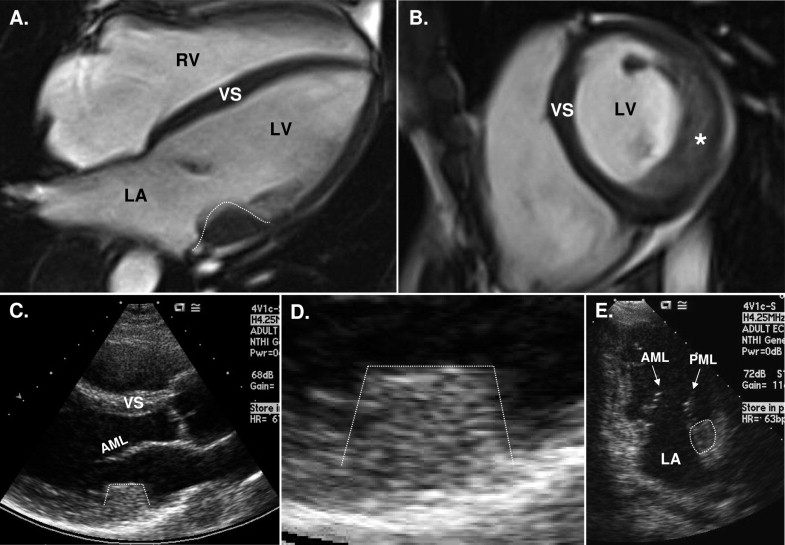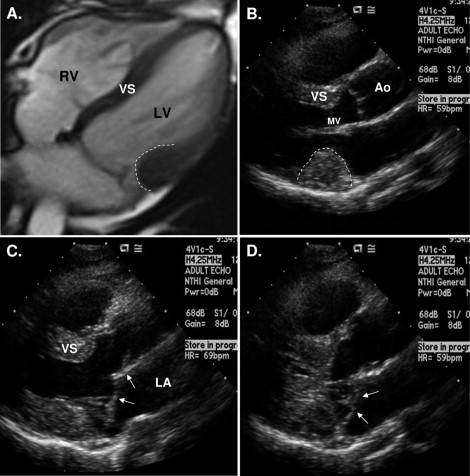Few other diseases show the degree of phenotypic heterogeneity expressed by HC. The two novel patients reported here with isolated posterobasal LV free wall hypertrophy (and mitral valve prolapse) extend this morphologic diversity even farther, now 3 decades after the introduction of contemporary 2-dimensional imaging.
Hypertrophic cardiomyopathy (HC) is characterized by extreme diversity with respect to the distribution of left ventricular (LV) hypertrophy, identified by 2-dimensional echocardiography and cardiovascular magnetic resonance. Indeed, myriad patterns of LV wall thickening have been recognized, ranging from massive and diffuse to segmental and relatively mild. When hypertrophy is confined to a small area of the left ventricle, the site is usually in the basal anterior ventricular septum but also has been reported in the apex, anterolateral free wall, or posterior (inferior) portion of the septum.
Case Reports
We have recently identified 2 extraordinary patients with nonobstructive HC and segmental LV hypertrophy limited to the posterobasal free wall, a pattern virtually unrecognized within the broad clinical spectrum of HC ( Figures 1 and 2 ). Notably, the 2 patients also had mitral valve prolapse with redundant leaflets consistent with myxomatous degeneration ( Figure 2 ).



Stay updated, free articles. Join our Telegram channel

Full access? Get Clinical Tree


